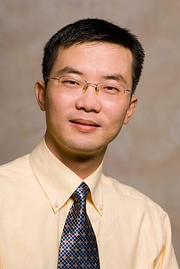When I started studying Traditional Chinese medicine (TCM) I was overwhelmed with what seemed like the exotic nature of the plants we used. I developed a reverence for these plants and imagined they were somehow different, that they must be grown on the misty sides of mountains and tended by enlightened monks. I kept this notion for an embarrassingly long time, which was confirmed by my inept attempts to grow some of the herbs I thought would be able to take the Texas heat.
(protip: turns out you have to water and care for plants and just because the nursery sells it doesn’t mean it is a good match for my special kind of neglect.)
Fast-forward a couple of years and I had a nice little coincidence convince me just how wrong I was. We have to use the Latin names for herbs on our labels, so I started to get used to going back and forth between pin yin and Latin. Then I did a little work with the City of Austin invasive plant monitoring team, which involved a lot of pouring over lists of, you guessed it, Latin plant names. I started to see Chinese herbs everywhere and quite a few of them are considered invasive. So let’s go through a quick list of some Chinese herbs that you probably walk past almost daily.
Number one on the list of Central Texas invasive list that is also a Chinese herb:
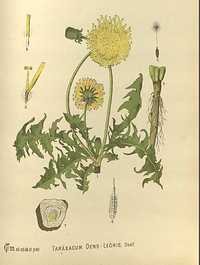 1. Taraxicum officinale or T. mongolicum – Common Dandelion – Pu Gong Ying
1. Taraxicum officinale or T. mongolicum – Common Dandelion – Pu Gong Ying
This perennial aster long considered the scourge of the suburban lawn also has an extraordinarily long history of use as medicine and food. The common name dandelion is a corruption of the French “dent de lion” meaning “tooth of the lion” which refers to the toothed or lacerate leaf margins. The younger tender leaves are tasty in salads, the flowers can be used to make wine and the whole plant is used in TCM where it is listed as a Clear Toxic Heat herb and is one of the five herbs that makes the formula Wu Wei Xiao Du Yin so effective.
Harvest this plant when it starts to flower but before it goes to seed and dig as much of the long root as you can get. Let it soak in tepid water to loosen dirt and then remove any additional dirt with running water. Dry the whole plant on drying screens in the sun. You can separate the leaves and flowers as they will dry faster than the root and don’t need as much cleaning.
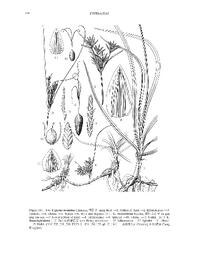 2. Cyperus rotundus – Purple nutsedge rhizome – Xiang Fu
2. Cyperus rotundus – Purple nutsedge rhizome – Xiang Fu
Hated is probably not too strong a word to describe how people feel about purple nutsedge. In fact, it is listed as one of the world’s worst weeds because it propagates vegetatively, is a perennial, and resists almost all control measures. It produces about inch long rhizomes, which is the part we want to use. The rhizomes can be separated from the roots and aerial portions of the plant, pressure washed and then put on a screen in the sun to dry. Xiang Fu is used in TCM as a qi-regulating herb mainly focused on liver qi stagnation.
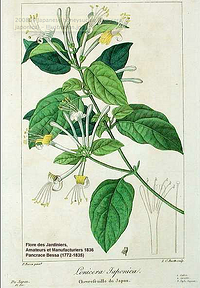 3. Lonicera Japonica – Japanese Honeysuckle – Jin Yin Hua
3. Lonicera Japonica – Japanese Honeysuckle – Jin Yin Hua
Honeysuckle does very well in Texas. It can take the heat and is pretty drought tolerant. If you are out hiking around in a greenbelt in Austin and keep a sharp eye you are likely to come across some. The key way to identify the Japanese honeysuckle is contained in the Chinese name. Jin Yin Hua translates as “gold silver flower”. If it has coral colored flowers then it is L. sempervirens and not what you want although the nectar is just as sweet and there is something about sucking the nectar out of honeysuckle that just brings out the kid in you.
Harvest this flower right as it about to open. If it has already opened it is too late. Then, because this flower is delicate, you should dry it quickly. It would be hard to get any appreciable amount of product from a wild stand of L. japonica as you will work pretty hard just to get a couple of grams of dried flowers.
So let’s talk about some trees that are everywhere in central Texas.
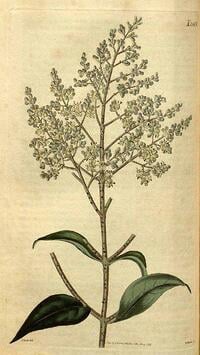 4. Ligustrum luciduim – Glossy Privet – Nu Zhen Zi
4. Ligustrum luciduim – Glossy Privet – Nu Zhen Zi
This is so invasive that in just about any disturbed area near water you will find them, in fact unless controlled they can easily take over large stretches of mid-canopy trees in established forests. In the spring they have a very nice cluster of flowers that develops in late summer to a cluster of dark purple fruits. Each fruit contains one or two seeds and that is the portion used in TCM. Pick them when they are ripe, but you will have to beat the birds to them. Dry on a drying screen. You do not have to remove the seeds from the fruit to use as an herb.
In TCM Nu Zhen Zi is used as a Yin tonic and is frequently used in formulations for menopause.
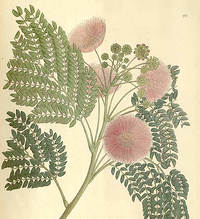 5. Mimosa Julibrissin – Persian silk tree – He Huan Hua and He Huan Pi
5. Mimosa Julibrissin – Persian silk tree – He Huan Hua and He Huan Pi
This invasive is as likely to be found in disturbed park areas as it is to be in someone’s yard planted as a specimen tree because of its unusual and beautiful flowers. Both the flower and the bark are harvested but harvesting the flowers can be fiddly work. They are delicate and sticky and don’t all flower at the same time. They need to be cooled after harvest and then dried. According to Wilson Lau, president of NuHerbs, it takes 3 man-hours to properly clean half a kilo of He Huan Hua so that it looks like you are used to seeing it in clinic. Peg Schafer, author of The Chinese Medicinal Herb Farm harvests the flowers but recommends leaving them whole with the calyx and a bit of stem if need be, but to warn potential buyers that there are stems. The bark can also be harvested but, by in large, requires cutting down the tree or at least large branches.
Both the flower and bark of M. julibrissin are listed in the Calm Shen category of TCM herbs for constraint due to liver qi stagnation.
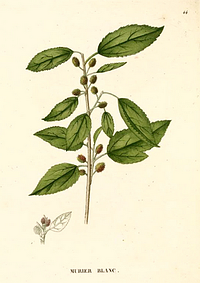 6. Morus alba – White Mulberry tree
6. Morus alba – White Mulberry tree
Sang Ye Leaves
Sang Bai Pi Root Bark
Sang Zhi Twigs
Sang Shen Zi Fruit
You are probably more likely to find M. rubra (red mulberry) here in Central Texas, but if you look closely you will find the species, M. alba (white mulberry) that is indicated for so many uses in TCM. If you do find one, what you have found is a runaway. M. alba was imported from China in an attempt to start a silk industry that was floundering because M. rubra, a sort-of native, was not the silk worm’s preferred species. That industry floundered further when they could not compete with the low wages paid in China and Japan. (Sound familiar?) However large stands of M. alba still can be found in the panhandle of Texas where they were also planted as windbreaks. Some of our runaways come from those too.
So what is the difference? Well, you can’t really tell from the fruit or the bark but you can see the difference in the leaves. Both M. alba and M. rubra have leaves that are anywhere from simple ovate leaves to ones that are deeply lobed but there are two distinguishing characteristics. M. alba has leaves that are really shiny on the topside and the leaf margins have teeth, but think molars (slightly rounded) and M. alba has duller topsides and its leaf margins have teeth but think incisors (much sharper) You are also much more likely to find M. alba in full sun and M. rubra is more shade tolerant.
This tree’s uses in TCM are varied, from dispelling wind heat, helping with cough, directing herbs to the shoulders and yin tonic. The most likely plant part you will be harvesting will be the leaves, which are frequently used. Pick them then wash in warm water and leave out on screens to dry. It’s just that easy. The twigs should be harvested from the higher parts of the tree, which can be dangerous over a certain height and will require some cutting and drying. If you want to prepare them the way the are prepared for use in China you will need some heavy duty cutting gear.
This is not a simple preparation and will require specialized equipment. However, the fruit doesn’t require anything but beating the birds, raccoons, and possums to it. Everybody loves mulberry.
So get out to the parks around central Texas and see if you can find all six of these Chinese herbs and if you do, think about processing them for personal use. Some things to think about when you are wild crafting is pollution, both air and water. If you are harvesting along Shoal Creek, say in Pease Park, think about where the water came from. It is largely rain runoff and it washes down oil, herbicides, and fertilizers just to name a few. Lamar Blvd. is a pretty well traveled street and every car that goes up and down it, is leaving behind combustion residue. The good news is that most of this stuff will make it into the soil where it often gets mechanically filtered and then bacteria and fungi in the soil go to work on many of the toxic substances. Of course, some of these chemicals are filtered out by the plants and not taken up in the roots and rarely make it to the leaves and fruits. As far as airborne pollutants go, washing the part of the plant you are going to use is a pretty good way to remove most of them.
About the author:
David Jones L.Ac., a graduate of AOMA, is one of the founders of The Third Coast Herb Co. where he is chairman of the board and the vice president of new product development, which is quite a mouthful so he prefers Chief Herb Nerd.
Illustration notes and credits
T. Official – Medicinal Plants – An illustrative and descriptive guide Charles F Millspaugh M.D. 1892
C. Rotundus – Flora of China
L. Japonica – Fleur de Jardiner 1836
L. Lucidium – Curtis’s Botanical Magazine vol. 52 1825
A. Julbrissin – Missouri Botanical Society
M. Alba – Saint Hilaire Arb. Pl. 44 1824



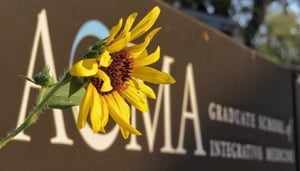 AOMA along with the world of Acupuncture as a whole has moved away from the usage of the word. The medicine taught and practiced at AOMA comes not from the falsely depicted “backwards nations” of colonial fiction, but from the rich, vibrant cultures of Asia which were just as diverse and advanced (more so at times) as those of Europe. By shedding this burdened word from our lexicon we seek not to abandon the roots of Acupuncture, but rather to continue integrating this medicine into American society.
AOMA along with the world of Acupuncture as a whole has moved away from the usage of the word. The medicine taught and practiced at AOMA comes not from the falsely depicted “backwards nations” of colonial fiction, but from the rich, vibrant cultures of Asia which were just as diverse and advanced (more so at times) as those of Europe. By shedding this burdened word from our lexicon we seek not to abandon the roots of Acupuncture, but rather to continue integrating this medicine into American society.
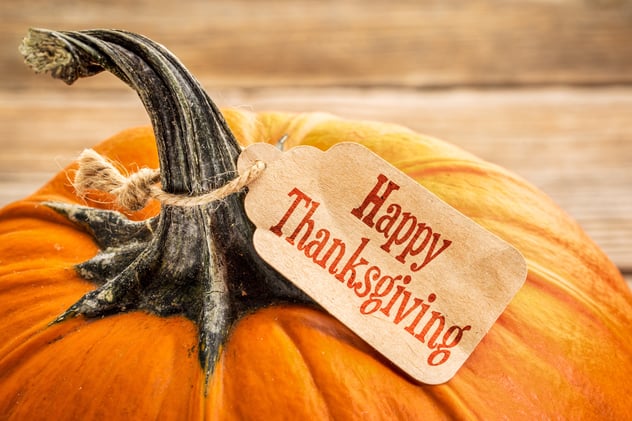
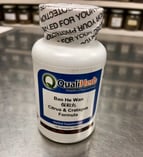

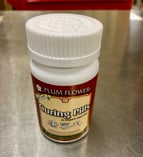

 our hostess is a doctor of Chinese medicine. We are spoiled at the end of the night with a customized decoction that’s been bubbling on the stove throughout Thanksgiving dinner. It’s one of my favorite traditions. This year, we will fly home to see my parents for the first time in 3 years and they live all the way in Indonesia. Bulk herbs are not convenient for this trip so I will be turning to prepared formulas. I know I can’t control everything that will be on the dinner table, and quite frankly, I don’t want to. Part of the joy of travel is to enjoy other’s traditions and I plan to mindfully indulge in everything in moderation out of respect for my host and my own experience.
our hostess is a doctor of Chinese medicine. We are spoiled at the end of the night with a customized decoction that’s been bubbling on the stove throughout Thanksgiving dinner. It’s one of my favorite traditions. This year, we will fly home to see my parents for the first time in 3 years and they live all the way in Indonesia. Bulk herbs are not convenient for this trip so I will be turning to prepared formulas. I know I can’t control everything that will be on the dinner table, and quite frankly, I don’t want to. Part of the joy of travel is to enjoy other’s traditions and I plan to mindfully indulge in everything in moderation out of respect for my host and my own experience. 




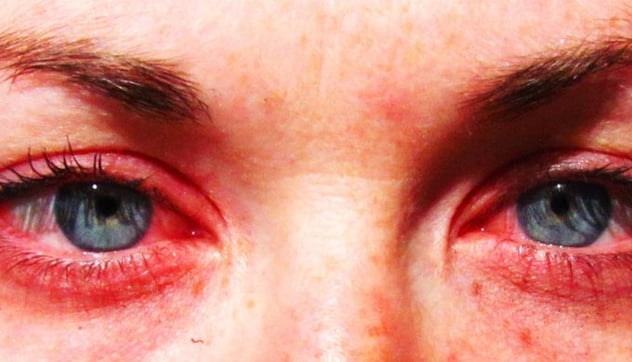
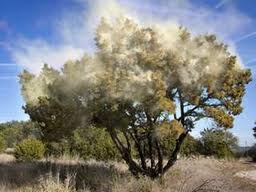 Being a native Austinite (I moved here from a family farm just outside of Georgetown in high school) I was pissed when I started getting allergies in college. I figured locals should be immune, right? Wrong! Back then the only way I knew how to cope was to take Sudafed which worked okay. I soon realized pseudoephedrine made me feel hyped up and anxious. I decided I’d rather suffer a few sniffles and coughing attacks and thus began my journey to find an alternative. [photo credit: KXAN]
Being a native Austinite (I moved here from a family farm just outside of Georgetown in high school) I was pissed when I started getting allergies in college. I figured locals should be immune, right? Wrong! Back then the only way I knew how to cope was to take Sudafed which worked okay. I soon realized pseudoephedrine made me feel hyped up and anxious. I decided I’d rather suffer a few sniffles and coughing attacks and thus began my journey to find an alternative. [photo credit: KXAN] Many people know about the benefits of nasal irrigation. Some people just snort salt water up their nose from a bowl, but I prefer to use the neti pot. If you’ve never done it before, I promise it is not like getting water up your nose when you are swimming. It doesn’t hurt at all (unless you’re already really congested). Using a neti pot works best as a preventative. You’re basically rinsing all of the pollens and pollution out of your nose and sinus cavities. I think it’s best to rinse in the evening, especially if you’ve been outside during the day.
Many people know about the benefits of nasal irrigation. Some people just snort salt water up their nose from a bowl, but I prefer to use the neti pot. If you’ve never done it before, I promise it is not like getting water up your nose when you are swimming. It doesn’t hurt at all (unless you’re already really congested). Using a neti pot works best as a preventative. You’re basically rinsing all of the pollens and pollution out of your nose and sinus cavities. I think it’s best to rinse in the evening, especially if you’ve been outside during the day.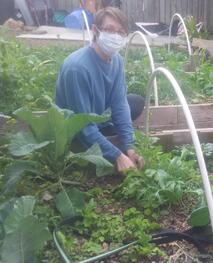
 Homeopathy – Treat Like with Like
Homeopathy – Treat Like with Like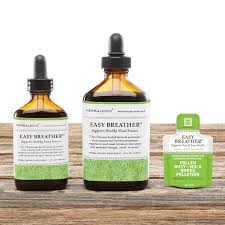 While I haven’t been as consistent with Chinese herbs this year, they have helped me significantly in the past. My usual regimen is to start taking the Jade Screen formula in early November to boost my immune system (wei chi). There is another formula that I think is considered to be similar to an antihistamine called Pe Min Kan Wan that my acupuncturist usually prescribes. By the way, most Chinese herbs require a prescription for a licensed acupuncturist/herbalist. An herbalist can help make sure you take the herbal prescription that is specific to your symptoms, whether they are runny nose, itchy eyes, congestion, or sinus headache. And while you’re there, you might as well get some acupuncture which can also help lessen symptoms and boost your immunity. One formula that you can get over-the-counter in most natural food stores/pharmacies in Austin is
While I haven’t been as consistent with Chinese herbs this year, they have helped me significantly in the past. My usual regimen is to start taking the Jade Screen formula in early November to boost my immune system (wei chi). There is another formula that I think is considered to be similar to an antihistamine called Pe Min Kan Wan that my acupuncturist usually prescribes. By the way, most Chinese herbs require a prescription for a licensed acupuncturist/herbalist. An herbalist can help make sure you take the herbal prescription that is specific to your symptoms, whether they are runny nose, itchy eyes, congestion, or sinus headache. And while you’re there, you might as well get some acupuncture which can also help lessen symptoms and boost your immunity. One formula that you can get over-the-counter in most natural food stores/pharmacies in Austin is  Sarah Sires Bentley worked as the director of community relations at AOMA. She oversees the marketing department for the institution, including the website, social media, and blog. Sarah is not a licensed practitioner. This blog post is for entertainment and educational purposes only and is not intended to diagnose or treat any disease.
Sarah Sires Bentley worked as the director of community relations at AOMA. She oversees the marketing department for the institution, including the website, social media, and blog. Sarah is not a licensed practitioner. This blog post is for entertainment and educational purposes only and is not intended to diagnose or treat any disease. 1. Taraxicum officinale or T. mongolicum – Common Dandelion – Pu Gong Ying
1. Taraxicum officinale or T. mongolicum – Common Dandelion – Pu Gong Ying 2. Cyperus rotundus – Purple nutsedge rhizome – Xiang Fu
2. Cyperus rotundus – Purple nutsedge rhizome – Xiang Fu 3. Lonicera Japonica – Japanese Honeysuckle – Jin Yin Hua
3. Lonicera Japonica – Japanese Honeysuckle – Jin Yin Hua 4. Ligustrum luciduim – Glossy Privet – Nu Zhen Zi
4. Ligustrum luciduim – Glossy Privet – Nu Zhen Zi 5. Mimosa Julibrissin – Persian silk tree – He Huan Hua and He Huan Pi
5. Mimosa Julibrissin – Persian silk tree – He Huan Hua and He Huan Pi 6. Morus alba – White Mulberry tree
6. Morus alba – White Mulberry tree 

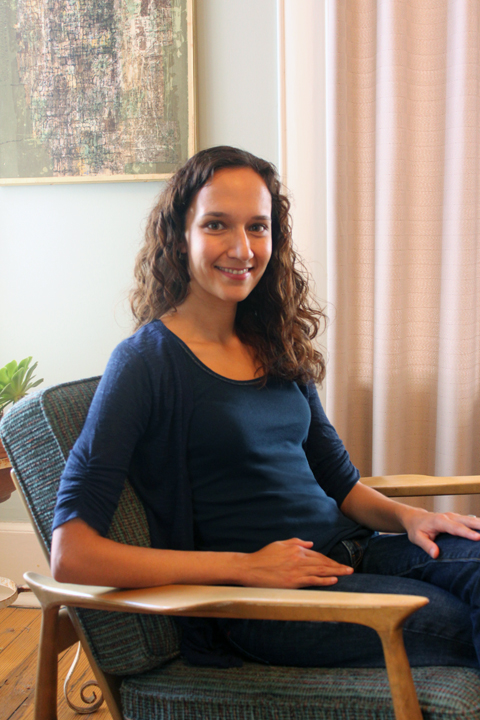 Author: Adrianne Ortega, LAc is a graduate of AOMA practicing in El Paso, Texas. You can contact Adrianne at 915.201.9303,
Author: Adrianne Ortega, LAc is a graduate of AOMA practicing in El Paso, Texas. You can contact Adrianne at 915.201.9303, 
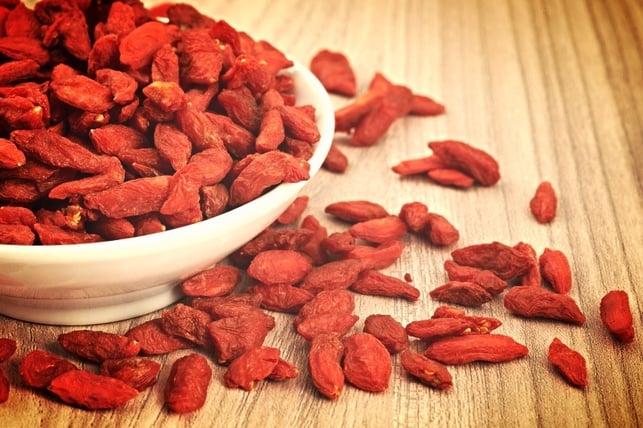
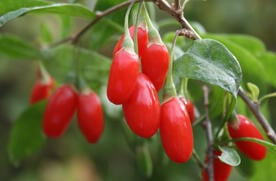
 ter”, congee is eaten throughout China as a breakfast food. It is a thin porridge, usually made from rice, although other grains may be used.
ter”, congee is eaten throughout China as a breakfast food. It is a thin porridge, usually made from rice, although other grains may be used. 
.jpg?width=223&height=335&name=herbs_students_(3).jpg) Herbal Medicine Careers
Herbal Medicine Careers.jpg?width=293&height=264&name=herbs_(2).jpg) The
The 
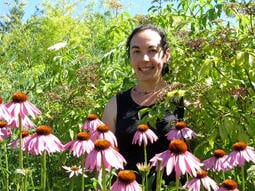 enny Perez has been working to re-connect plants and people for more than 15 years by sharing her passion and practices of urban horticulture, kitchen medicine and therapeutic nutrition. She managed the Bastyr University medicinal herb garden for 7 years, was adjunct faculty for their Botanical Medicine Department for 5 years and created and directed the Holistic Landscape Design certificate program. Currently, she works as the Education Coordinator for the
enny Perez has been working to re-connect plants and people for more than 15 years by sharing her passion and practices of urban horticulture, kitchen medicine and therapeutic nutrition. She managed the Bastyr University medicinal herb garden for 7 years, was adjunct faculty for their Botanical Medicine Department for 5 years and created and directed the Holistic Landscape Design certificate program. Currently, she works as the Education Coordinator for the 

